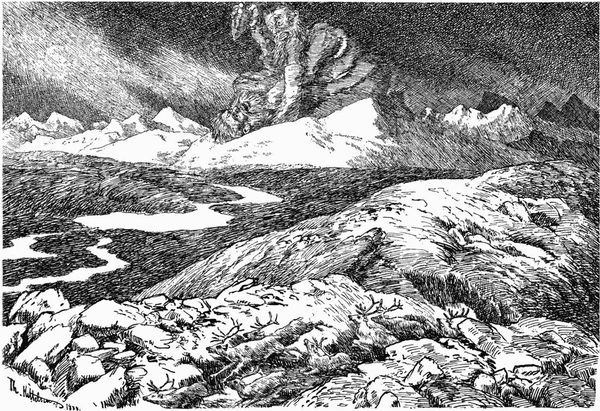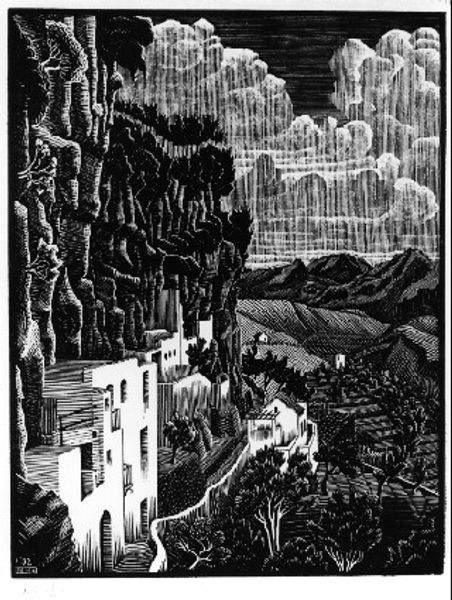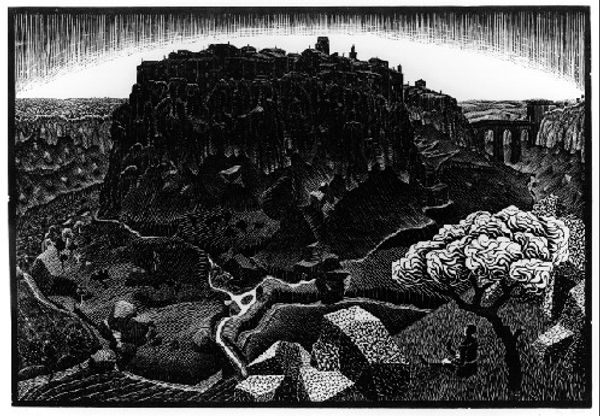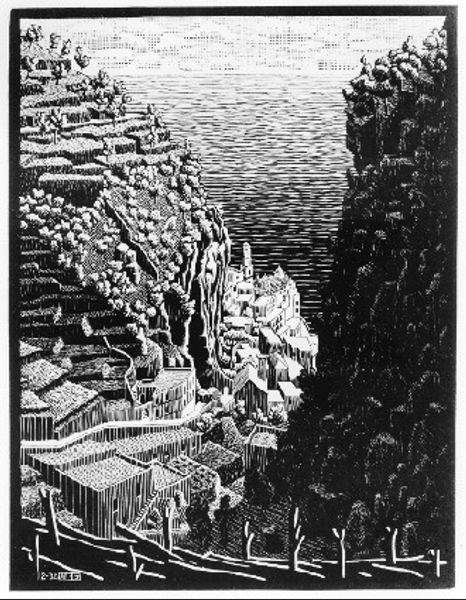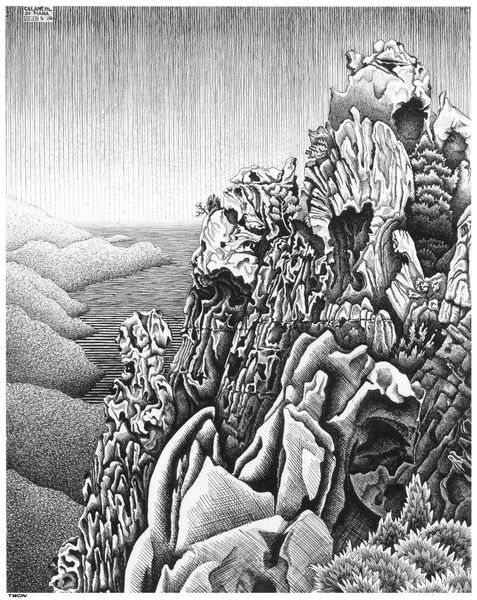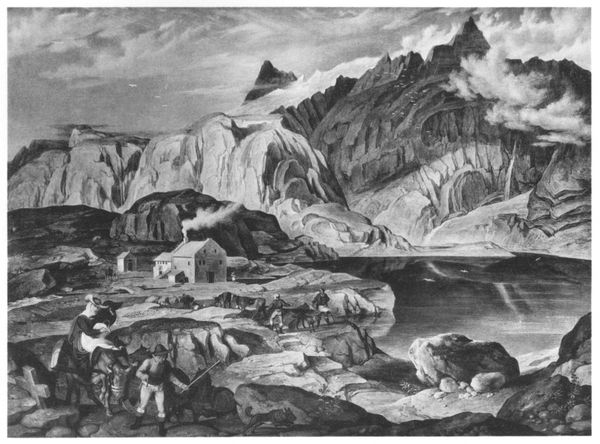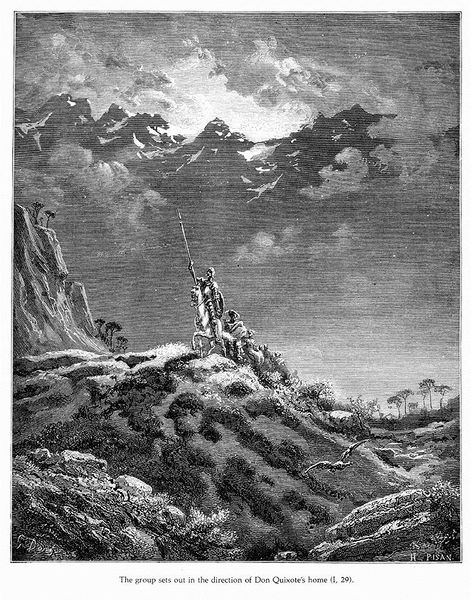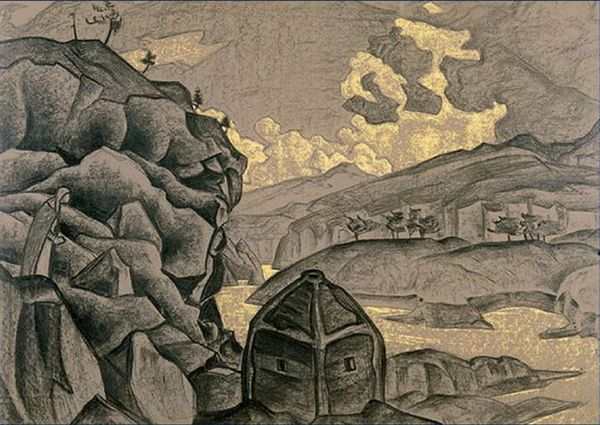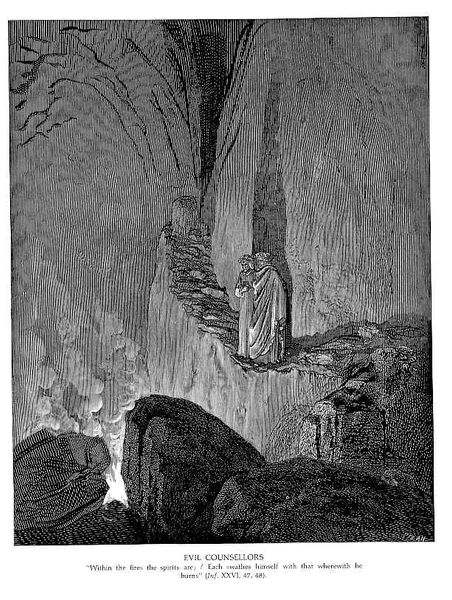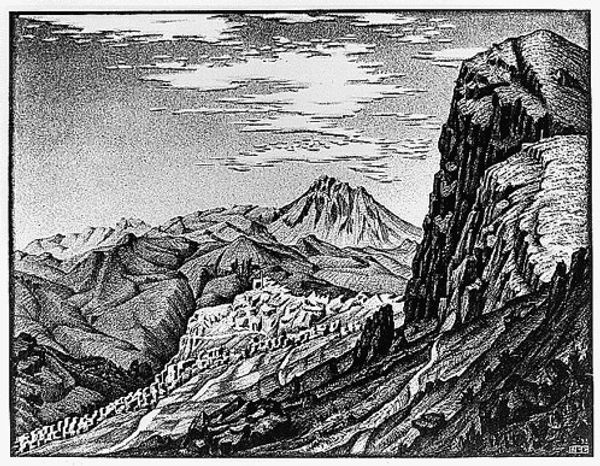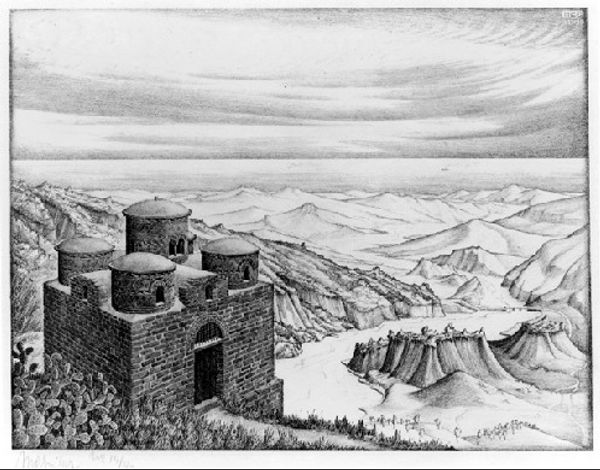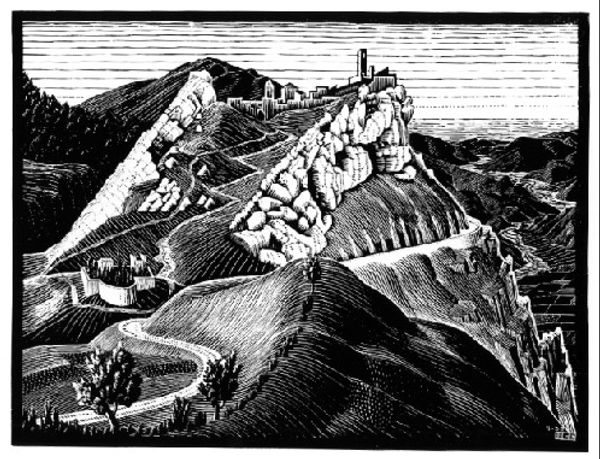
drawing, pencil
#
drawing
#
landscape
#
house
#
form
#
geometric
#
mountain
#
pencil
#
surrealism
#
line
#
cityscape
#
surrealism
#
pencil art
#
building
Copyright: M.C. Escher,Fair Use
Editor: So, this is M.C. Escher's "Castrovalva," a pencil drawing from 1930. The cityscape clinging to the mountainside creates such a disorienting but beautiful perspective. What cultural significance might be embedded in such a vertiginous architectural landscape? Curator: It's not merely disorienting; it actively plays with our ingrained perception of space, doesn't it? Consider the symbolic weight of the town itself. Perched precariously, yet enduring. Does it represent resilience, perhaps? Or the fragile balance between human construction and the forces of nature? Editor: Resilience… I like that. It also looks a bit like a maze, or perhaps a puzzle, don’t you think? Curator: Exactly! What could that mean? Perhaps the winding paths are symbolic of life’s journey, or the choices we make? Notice how Escher uses geometric patterns in his portrayal of the city? Editor: Yes, that is a theme, and now you point that out I also noticed how it recurs throughout the piece. Why do you think he highlighted geometric aspects? Curator: Geometry can represent order, even within chaos. The building blocks of civilization itself! Could it suggest an inherent structure beneath the surface of the seemingly chaotic landscape? Editor: That's a very interesting interpretation. It highlights that while our perception might initially see the townscape as chaotic, its underlying geometric components offer stability. It has so much to explore! Curator: Precisely. And by using recognisable symbols of civilization – homes, mountains, structures - Escher is layering meaning and inviting dialogue, allowing us to continually revisit and interpret.
Comments
No comments
Be the first to comment and join the conversation on the ultimate creative platform.
